Not just another band from Boston
He didn’t expect to do well at MIT; he didn’t expect his music to be successful. But engineer Tom Scholz ’69, SM ’70, became an inventor, producer, and philanthropist—and the artistic and technical brains behind a juggernaut rock band.
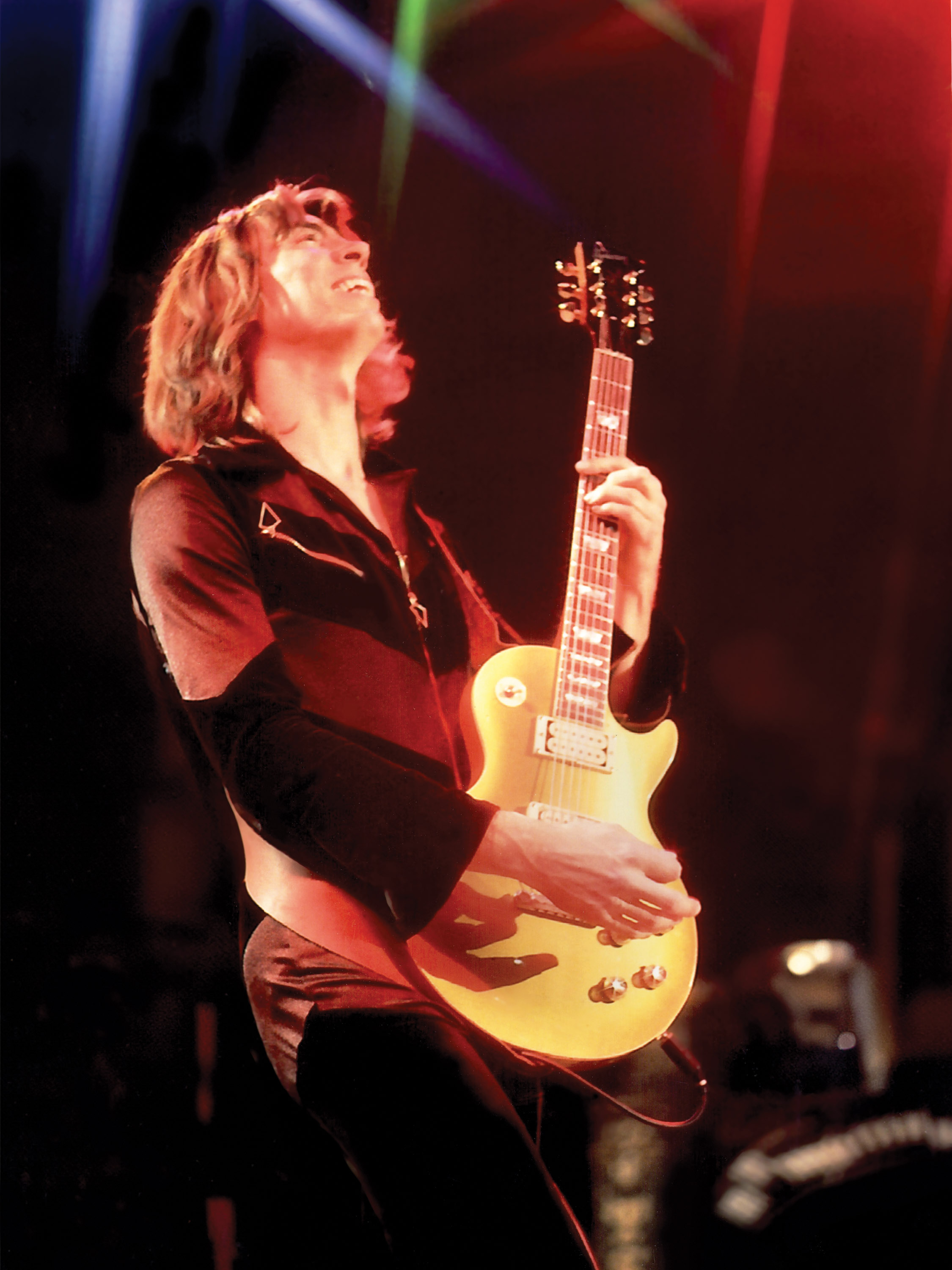
In 1976, Tom Scholz ’69, SM ’70, was a 29-year-old product design engineer working at Polaroid on audio electronics and tape-recording technology, with 11 patents under his belt. But few colleagues knew what Scholz did after hours, why he often came in late, or why he was, in his own words, “a horrible employee.”
For five years, Scholz had been painstakingly crafting music and lyrics, and perfecting phenomenally complex sound production, in the makeshift basement recording studio at his apartment in Watertown, Massachusetts—playing all his own instruments and mixing them on an analog 12-track recorder until they sounded as natural as a band that had played together for years. He got a friend, local musician Brad Delp, to record the lead vocals, mixing that in too. After finally picking up a contract with CBS’s Epic Records, he recruited some more friends from the Boston music scene to be the “faces” for an album with the working title Boston. When it came time to choose a name for the band, someone at the studio suggested using the same one. Having grown up in Toledo tuning in to Boston’s WBZ radio at night to hear British rock bands, Scholz readily agreed.
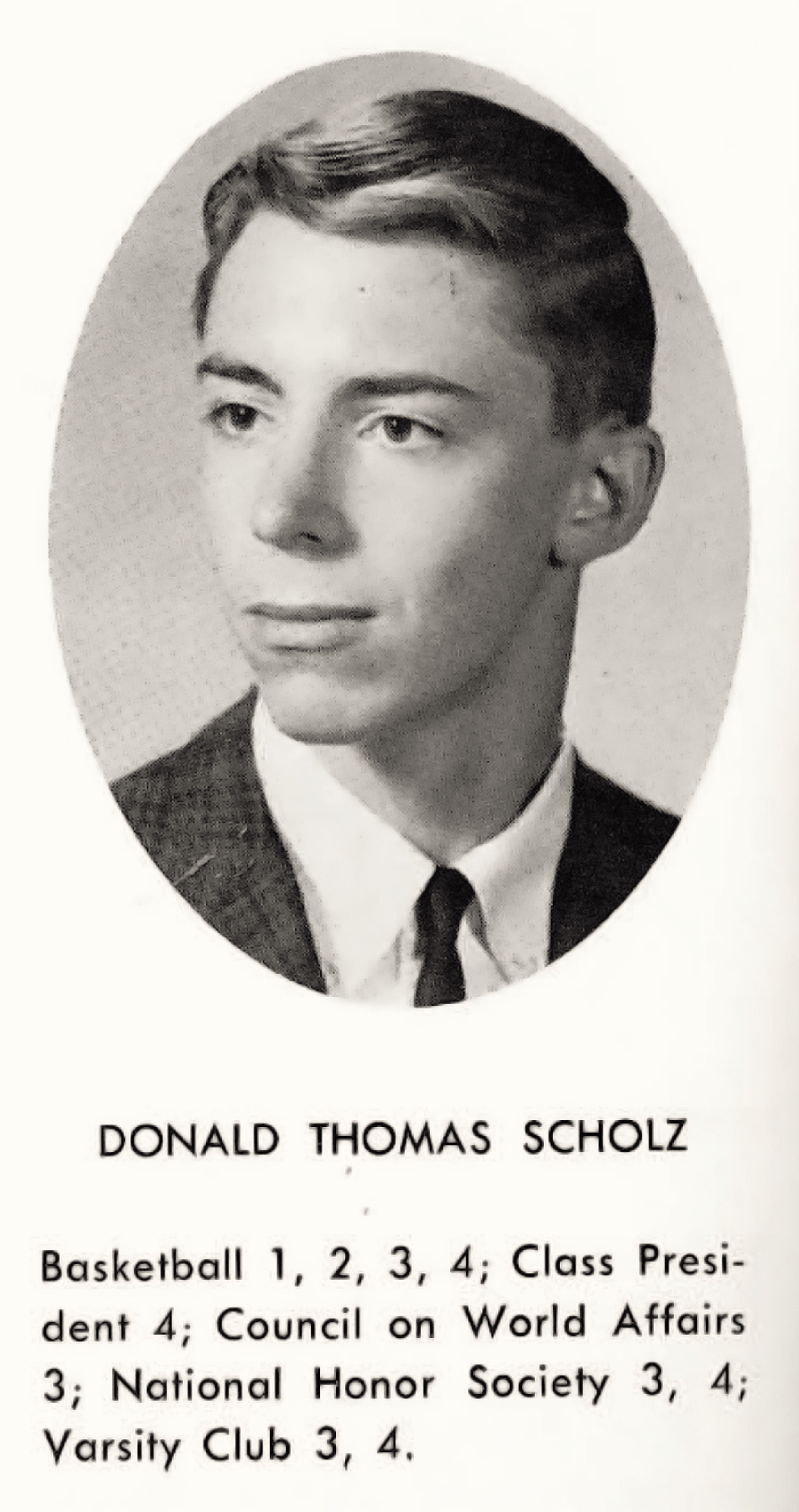
“Honestly, I thought the recording I made in 1976 was going to be forgotten by the beginning of 1977,” he says. He was just hoping to get the song on the radio so he could get gigs in local clubs with a song people recognized. “I actually didn’t realize there was anything serious happening with my album until I was working in my back room [at Polaroid]—I had a secret back room, sort of like a boiler room, in the bowels of the building in Tech Square—and somebody comes running and says, ‘Hey! Your song’s playing in the drafting department!’” he recalls. He raced off to hear it but only caught the tail end. And that kept happening until finally, several months after “More Than a Feeling” hit the Top 10, he heard it all the way through on the radio.Still, Scholz didn’t quit his day job until Boston became a national arena headliner.
Donald Thomas Scholz, a teenage fan of model airplanes, junker cars, basketball, and classical music, matriculated at MIT in 1965 to study mechanical engineering. Competition was brutal, he understood: “When I showed up for my freshman orientation, they sat us all in a large assembly area and put up a chart showing everyone’s SAT scores … I thought, ‘Now I’m in trouble.’” Scholz was so sure he’d flunk out that by the end of his first semester he’d already applied to transfer—but then he discovered he’d gotten a 4.8 average and decided to stay. In fact, he performed so well that MIT offered him a scholarship for a one-year master’s in mechanical engineering. His thesis project—a pair of simple A-frame hoists that made it possible to assemble prefabricated homes without a crane—led to his first patent, in 1972.
“The things I was exposed to at MIT were the basis for absolutely everything,” he says. “I use things I learned at MIT in the engineering department every day of my life—numerous times, every day.” MIT’s encouragement of blue-sky thinking would also stick with him. “It made me a little less fearful about looking like a fool when I tried new things because some of them aren’t gonna work,” he says. “I learned how to learn when I went to MIT, and I tried not to stop.”
Scholz didn’t pick up a guitar until he was 21, after getting hooked on bands like the Kinks and the Yardbirds. He dove into learning to play and soon became fascinated by what analog processors and amplifiers could do to the sound. As an MIT junior, he used an electric piano to compose an instrumental piece that eventually became the song “Foreplay” on Boston’s debut album. At the time, he was living in a fourth-floor Allston apartment: “I had had enough [understanding] of dynamics and so forth to understand how sound can transfer through a wood floor. The three nurses that lived below us were extremely patient with me because I usually wrote between 12 and two in the morning, and every time I pounded on those keys they felt it through the ceiling—and never complained. I think they felt sorry for me because I had to go to MIT.”
“Somehow I had to make those two things coexist—you know, being a positive influence and making some awesome music that people would think was kick-ass rock and roll.”
In the six years between his master’s and the release of Boston, Scholz built and deployed increasingly complex homebrew gadgets to create the otherworldly music he heard in his head. His favorite musical device was what he named the “hyperspace pedal.” “You can play a note with vibrato forever,” is how he describes its effect. “You can make a chord go up and down by several octaves. More importantly, you can make sounds that NASA would be scared of from a rocket ship. And I used that to my heart’s delight recording all of the Boston albums.”
At Polaroid, Scholz’s primary responsibility was creating audio tape for the Polavision instant video system. Although that ended up being sold without audio, his work was instrumental in helping him develop the musical devices that gave Boston its singular sound. During that period, Scholz says, Polaroid “was almost like an extension of MIT—it had the same sort of mindset,” which gave him the freedom to build and experiment. Nearly all his Polaroid patents involved audio recording and reproduction.
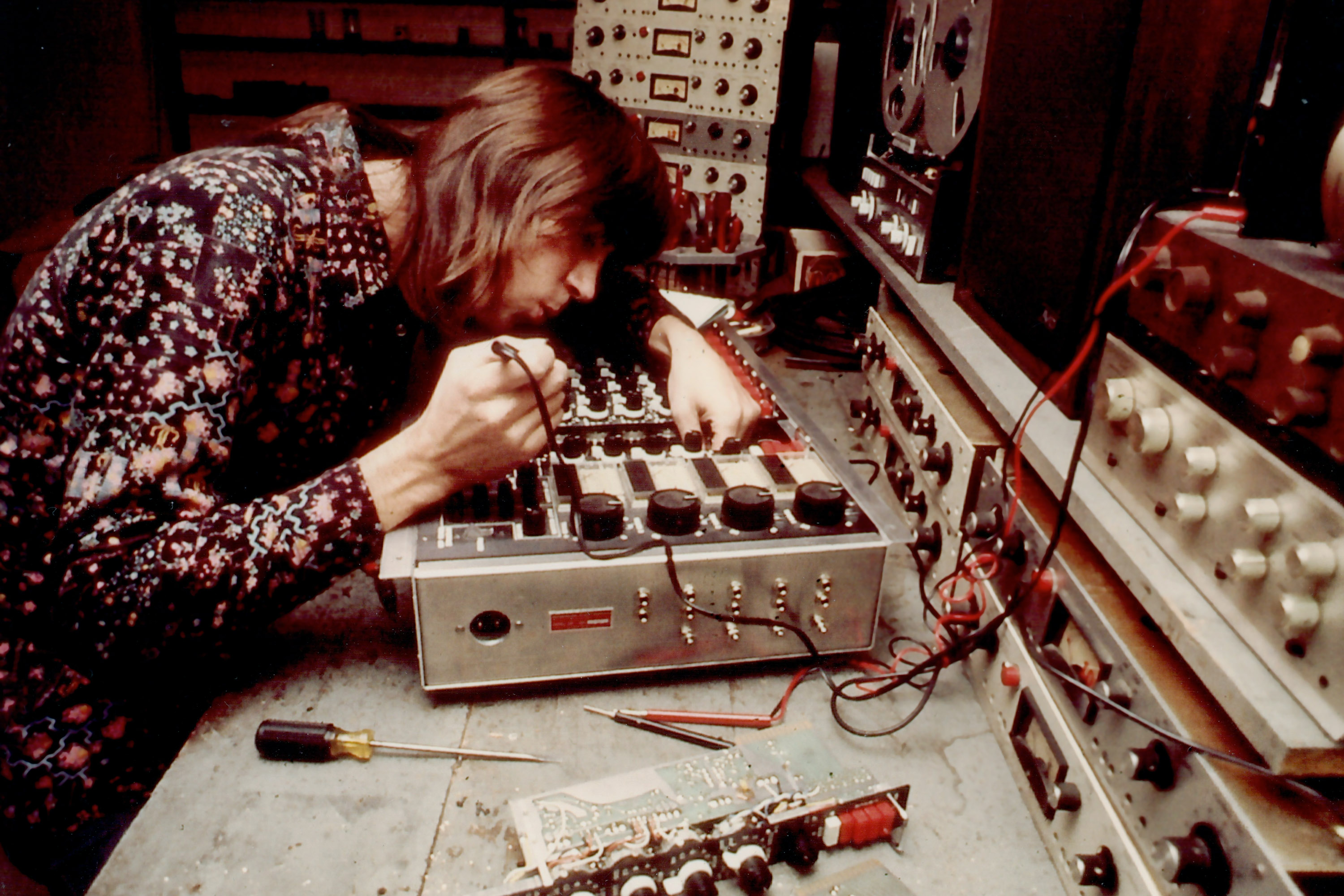
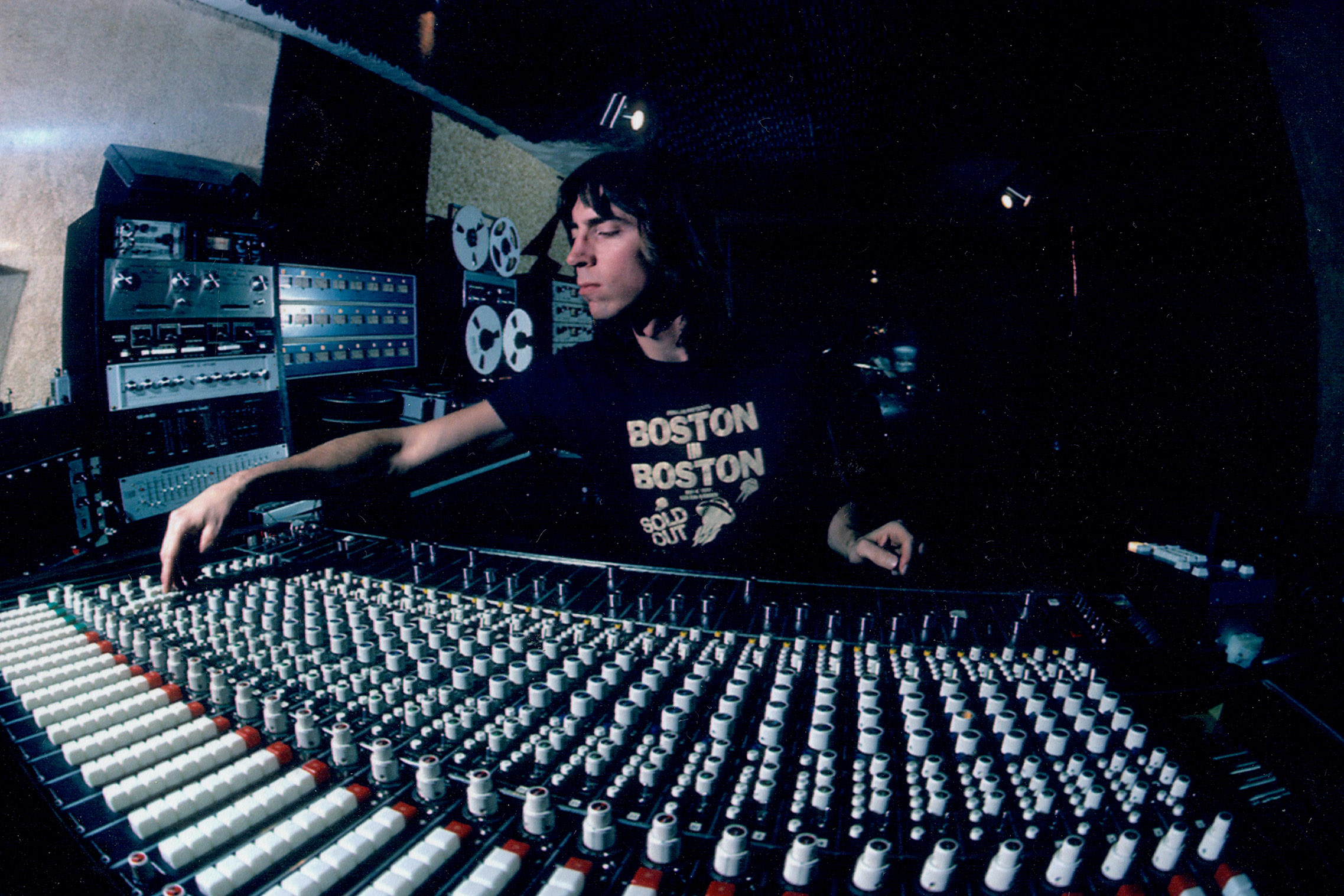
In 1977, Scholz repaired the 16x4 channel studio mixer he’d used to lay down all the instrument tracks for Boston’s debut album. A year later, he mixed their second album on an Auditronics 501 26x4 console.
Scholz’s nights were for producing music. As a neophyte but increasingly adept guitarist, he began renting time at expensive recording studios. When recording between midnight and 8:00 a.m. above a bar an hour’s drive from home became untenable, Scholz decided to build his “really awful but workable” basement studio in Watertown (where, at 6 foot 5, he had to duck to avoid hitting his head on the way down). “Without saying too much to the landlord … I built a couple of temporary walls, and used an awful lot of carpeting and sound-absorbing materials that I could scrounge up,” he remembers. “Because this was done on, of course, an extremely low budget. And I managed to keep the noise level down enough that I could record.”
That volume control took some of his MIT-nurtured ingenuity. Scholz had to record his multilayered guitar tracks “at very high amplifier output” to get the sound he wanted. “A hundred watts through the speakers that worked with that amp were just incredibly loud—not something you could use in the basement of a house, not even in a house, because people down the street and in the neighborhood would be complaining about it. I had to find a way to decrease the output of the amp without changing the sound appreciably.” To this end, two of his personal patents—for “Constant Volume Distortion Control” and the physical unit in which the distortion control was housed—became the basis for what he called the Power Soak attenuator, the first product sold by his company, Scholz Research & Design.
Executives at Epic Records were not enthusiastic about marketing a record that had been produced and recorded in a basement. Scholz and his “just another band out of Boston” flew to LA to record the vocals. Then Scholz went home to Watertown and, at the Epic producer’s request, re-recorded most of the album—“in exactly the same place as the demo they didn’t want to use, with exactly the same equipment, as close as I could to the original performance,” he says. “And that’s what they decided was great, and ready to be released.” Boston went on to become one of the best-selling debut albums of all time.
Boston last toured in 2017 and has sold more than 31 million records worldwide. Today, Scholz’s home studio lies fallow—not for lack of inspiration, but because it remains resolutely analog, and “unfortunately there’s almost no one left locally who can maintain or repair analog studio equipment.”
But he is still busy and engaged. He and his wife, Kim, operate the DTS Charitable Foundation, which he founded in 1987 to promote a “vegetarian lifestyle, and prevention of cruelty and suffering to animals both nonhuman and human” (he has been a vegetarian for decades). Knee injuries sidelined him from basketball a few years ago, but he does freestyle figure skating and plays “extreme croquet,” which is typically played on challenging terrain without the usual out-of-bounds rules. He has a pilot’s license, and one of his current passions is designing high-performance radio-controlled airplanes. “I love it,” he says. He is mourning the loss of the “scary-fast red delta-wing airplane” that he built in 1972, flew for 52 years, and considers his favorite invention: “Unfortunately, it had an in-flight breakup earlier this year and was destroyed. I was quite crushed by that. So was the airplane, by the way.”
Scholz says he and Kim have slowly turned their house into a workshop and lab. “There is no ‘house,’” he says. “When we have someone coming over for dinner, we actually have to clear out space to have a table that we can all sit at together.” (A proclivity for making things runs in the family; his son, Jeremy Scholz ’05, majored in mechanical engineering at MIT.) Scholz does interviews in “what used to be the electronics area for troubleshooting and fixing all this stuff in my studio,” he says. “It’s become a drafting area and a radio-controlled-aircraft fabrication/assembly area, and I have a small shop in what was the furnace room.”
He still hopes to get his studio back up and running, “because I am still writing music, believe it or not, in what’s left of my brain,” he says. “And it’s very frustrating not to be able to go in and make the recording of what I hear.”
Scholz marvels that classical composers could hear everything in their heads. “You listen to Vivaldi or Bach, and you think, ‘How did he know that those violins were going to work together when they all came together at the same time?’ He could only play one,” he says. “Whereas I always had to record things, listen to them together, and then go back and … ‘Well, that was the wrong bass line! I’ll try a different one,’ and so on.”
He initially came up with this method of layering different recordings together to please himself. “When I first started doing this, I was a kid in my 20s—well, late 20s—and I was just trying to put some music down that I thought sounded good. I actually didn’t believe that anyone else would think it sounded great,” he says. When it took off commercially, he felt compelled to become a positive role model as well. “Somehow I had to make those two things coexist—you know, being a positive influence and making some awesome music that people would think was kick-ass rock and roll.”
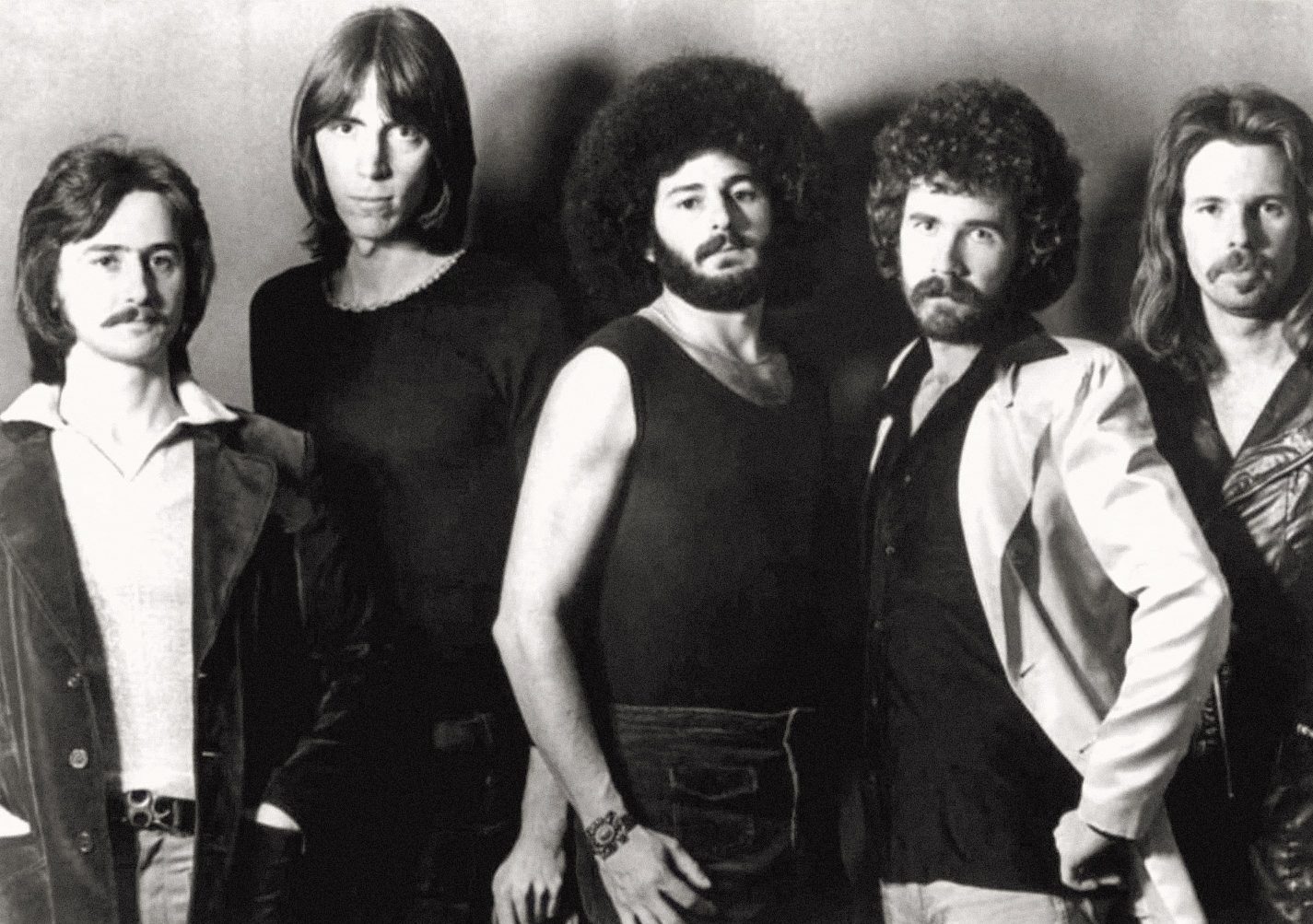
“After the first album, I was suddenly placed in a position where I was a figure that people were going to emulate. Kids listened to this music,” he says. “I felt this enormous weight, that everything that I did and everything that I said and anything I put on an album was going to have a possible effect on someone.”
While other rockers were cultivating wild personas, he focused on the connection between self-improvement, higher education, and Boston’s music and tried “to encourage people to do things that I thought were a good step for mankind,” he says. “So when someone 50 years later comes and says, ‘Oh, this song really helped me get through,’ it means the world to me.”
Scholz has always been true to himself and to his music, even in the days when he was being rejected by one record label after another. “Having failed miserably,” he says, “I thought, ‘You know what? I’m going to make one more demo, and it’s going to be just exactly the way I see it, and the way I want to hear it, and I’m going to play every single part.’ And that worked, oddly enough. It’s been a wild ride.”
Keep Reading
Most Popular
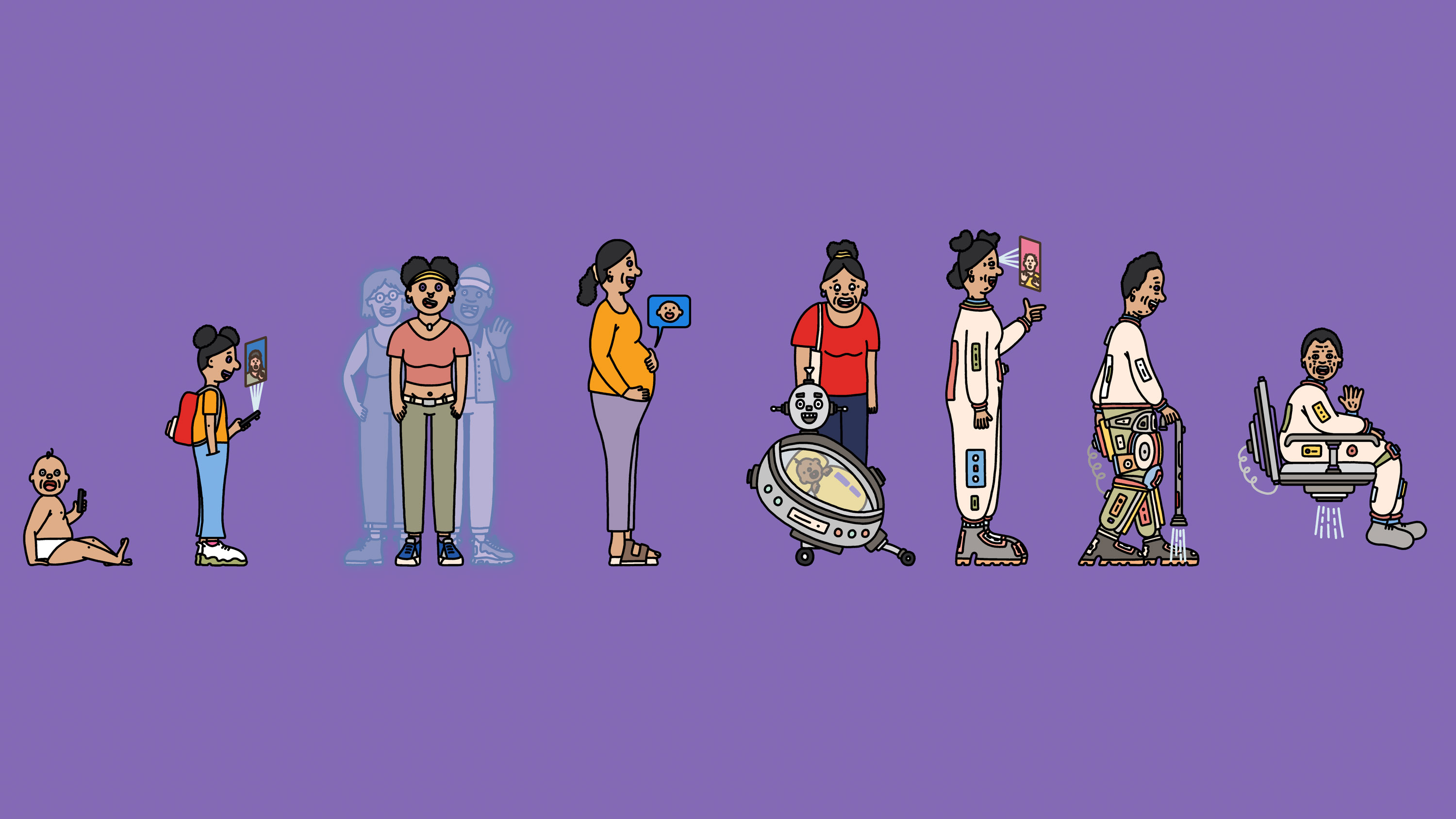
Happy birthday, baby! What the future holds for those born today
An intelligent digital agent could be a companion for life—and other predictions for the next 125 years.

This researcher wants to replace your brain, little by little
The US government just hired a researcher who thinks we can beat aging with fresh cloned bodies and brain updates.

Here’s how people are actually using AI
Something peculiar and slightly unexpected has happened: people have started forming relationships with AI systems.
Stay connected
Get the latest updates from
MIT Technology Review
Discover special offers, top stories, upcoming events, and more.
